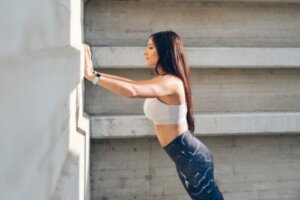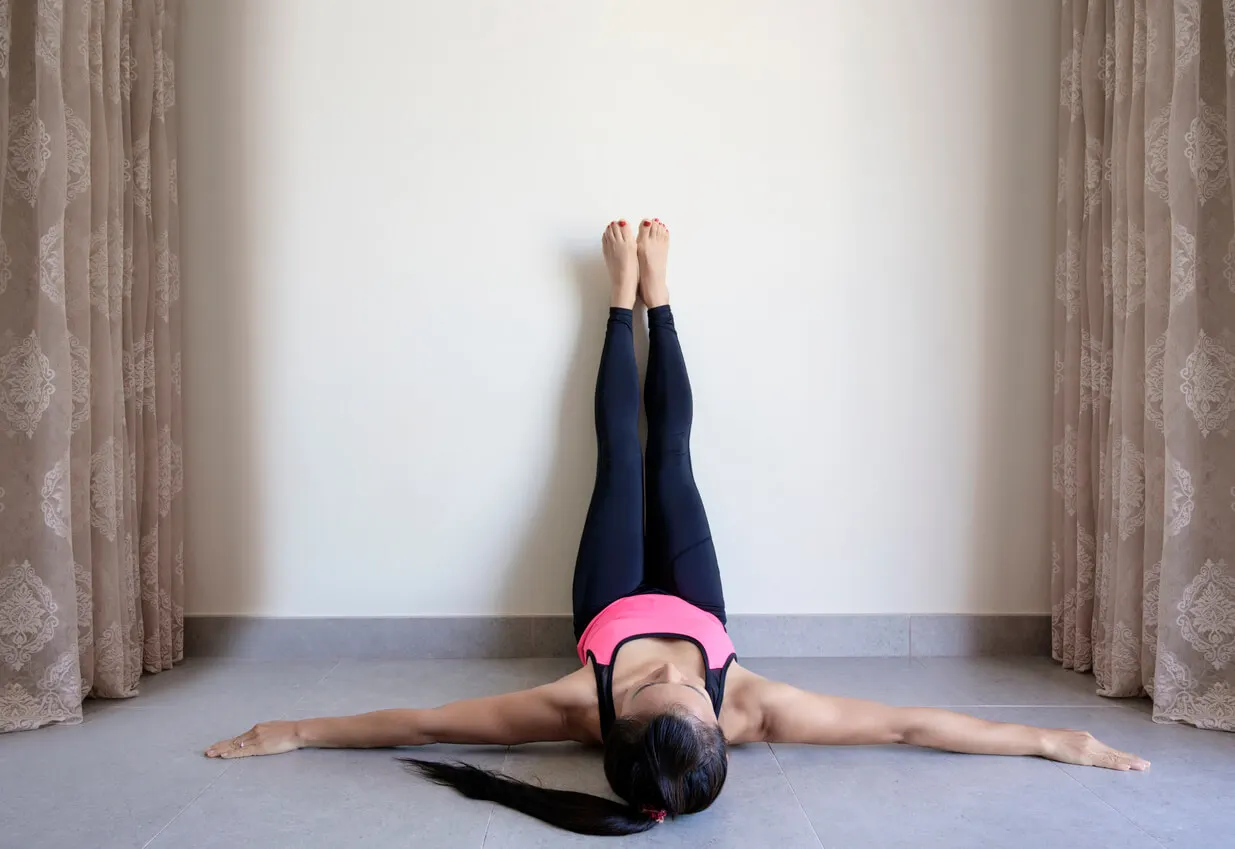Abdominal Training on a Wall: How to Do It


Reviewed and approved by the doctor Leonardo Biolatto
Getting your abdomen to look like a plank is the desire of many people who train. However, it often happens that conventional exercises are too easy or too boring. That’s why we’d like to propose a variation of abdominal training that’s just as effective and will really put you to the test. Learn about wall crunches and what abdominal exercises you can do in this article.
We don’t need any specific material to do wall crunches, but we will do them with our own body weight. The wall will serve as a support and we can break the monotony.
In addition, working the abdominals will allow us to strengthen a key area to perform all kinds of movements, as we improve the spine, correct our posture, achieve better balance and help us prevent injuries, among other benefits.
What are the abdominals and how can you work them?
The abdominals are a muscle group in the central area of the body. This region is made up of the following:
- The rectus abdominis, which is located in the middle part
- External obliques on each of its sides
- The internal obliques, in a deeper layer
- The transverse, in the anterior and lateral part.
Keeping our abdominals strengthened will help us to perform better in all activities of daily life, as these muscles are necessary for many movements, such as bending, jumping, or standing. In addition, they allow us to improve our posture and also serve an aesthetic function.
Learn how to do abdominal exercises on the wall
A wall is all you need to perform a whole workout routine, so if you’re one of those who prefer not to leave home, you can take advantage of any space to get in shape! For some activities, the wall will serve as a support, while for others, it will simply add some degree of difficulty.

1. Abdominal crunches
This is the best-known exercise when it comes to working the abs. Basically, it’s the activity in which the trunk is flexed upwards and backwards repeatedly.
To take advantage of the wall when doing crunches, we can do them the following way:
- First, lie on your back.
- Then, raise your feet and rest them against the wall.
- Your legs must be bent.
- Once in the starting position, simply raise your torso up and backward until you complete a full set.
We think you may be interested in reading this, too: The Diet and Training that Changed Vinicius and Real Madrid’s Lives
2. Lateral crunches
This variation is ideal for working the greater oblique of the abdomen. A study on the trunk exercises that activate most effectively showed that the horizontal condition has the advantage of acting on the internal obliques.
You can do it with wall support this way:
- Stand next to a wall, not in front of it.
- Tilt your body towards the wall to support a forearm. Your torso must remain straight.
- Then, you have to perform a hip movement towards the wall without touching it.
- After, do the same movement, but outward. A rocking motion is generated.
- Repeat this continuously until you finish the set.
3. Leg lifts
This is another classic exercise to strengthen the abdominal area, although in this case, you add the support of your hands on a wall. Mainly, this allows you to work the rectus abdominis.
You can try this exercise this way:
- Lie on your back with your hands stretched out while leaning on the wall.
- Lift your legs up to form a 90 degree angle.
- Lower your legs with a controlled movement, without touching the floor.
- Repeat the exercise until the set is complete.
4. Knee raises
To perform this exercise, face the wall with your arms on it, as if you were pushing it. Then, raise one knee diagonally and inwards to the opposite side.
This means that if, for example, you start the activity with the right leg, you will bring the knee to where the elbow of the left arm is. In this way, you will complete the set while elevating both knees in an interspersed manner.
5. A handstand
A handstand is a typical exercise of gymnasts in which we stand with our hands; the legs are up and the head down. In this case, to work your abdominals on the wall, you must achieve the same position, although you have to do it by lifting yourself into it.
To do this exercise, lie face down with your hands on the floor and your feet on the wall. Then, begin to take steps upwards and walk with your hands backward to get closer to the wall and be able to raise your body.
Once you’ve achieved the handstand, begin to perform the movements in reverse to descend in a controlled manner.
We think you may also enjoy reading this article: Low-Impact Cardiovascular Training: Exercises and Recommendations
6. Abdominal plank
The abdominal plank is an ideal activity to strengthen the whole body and is much more demanding than planks the core and much more demanding than traditional planks.
In fact, one study suggests that integrating abdominal hollowing into this exercise improves overall abdominal activity and adds that these findings provide updated guidelines for lumbar stabilization and core strengthening in health-related fitness programs.
It can be done as follows:
- Lie on the floor with your mouth facing upwards.
- Rest your feet on the wall with your legs bent.
- Lift your hips and hold the position for as long as you want.

We can also add some complexity and movement to the plank exercise for when you feel in better shape. To do this, you can try the following activity:
- Get into a traditional plank position, but with your arms straight and resting on a wall.
- Bring one arm back, while the other is held on the wall as a support.
- Then, return the arm to the initial position and repeat the movement with your other arm.
- In this way, you perform the exercise by bringing and returning each arm to the wall in an intercalated manner. You can do this for a set or however many times you’d like.
Work on the wall and break down your wall of comfort
Wall abdominal training is a good option to vary your exercises. It’s optimal for those who are already working in the area and are looking to add more difficulty.
In addition, you can do it in the comfort of your own home, since you really don’t need more than a wall. However, it’s advisable to combine crunches with cardiovascular exercises to help eliminate fat and achieve better results.
On the other hand, it’s also a good idea to consult a nutritionist to put together a meal plan that’s rich in protein that’s consistent with your training goals. Give these wall exercises a try, and you’ll get excellent results!
All cited sources were thoroughly reviewed by our team to ensure their quality, reliability, currency, and validity. The bibliography of this article was considered reliable and of academic or scientific accuracy.
- Park DJ, Park SY. Which trunk exercise most effectively activates abdominal muscles? A comparative study of plank and isometric bilateral leg raise exercises. J Back Musculoskelet Rehabil. 2019;32(5):797-802. doi: 10.3233/BMR-181122. PMID: 30856100. Disponible en: https://pubmed.ncbi.nlm.nih.gov/30856100/
-
García-Jaén M, Cortell-Tormo JM, Hernández-Sánchez S, Tortosa-Martínez J. Influence of Abdominal Hollowing Maneuver on the Core Musculature Activation during the Prone Plank Exercise. Int J Environ Res Public Health. 2020 Oct 12;17(20):7410. doi: 10.3390/ijerph17207410. PMID: 33053717; PMCID: PMC7600276. Disponible en: https://pubmed.ncbi.nlm.nih.gov/33053717/
This text is provided for informational purposes only and does not replace consultation with a professional. If in doubt, consult your specialist.








